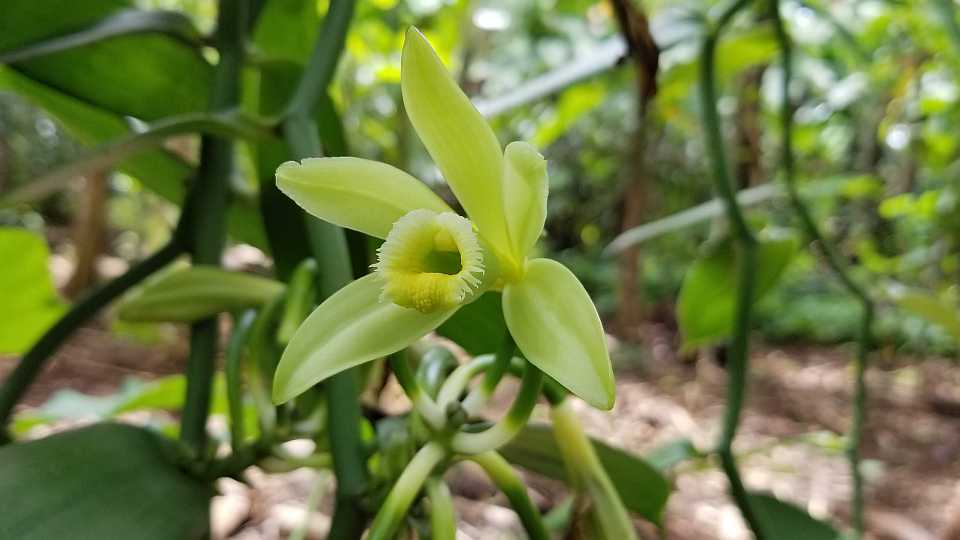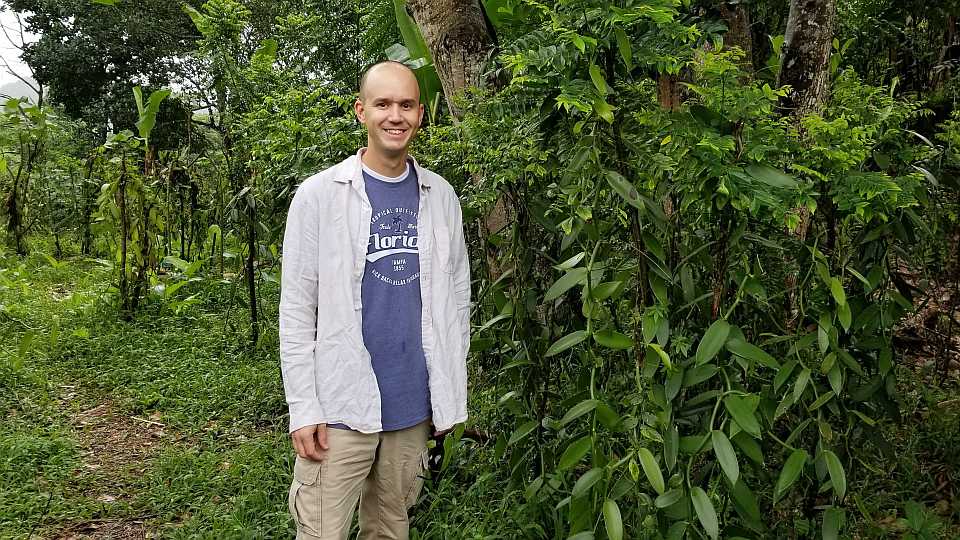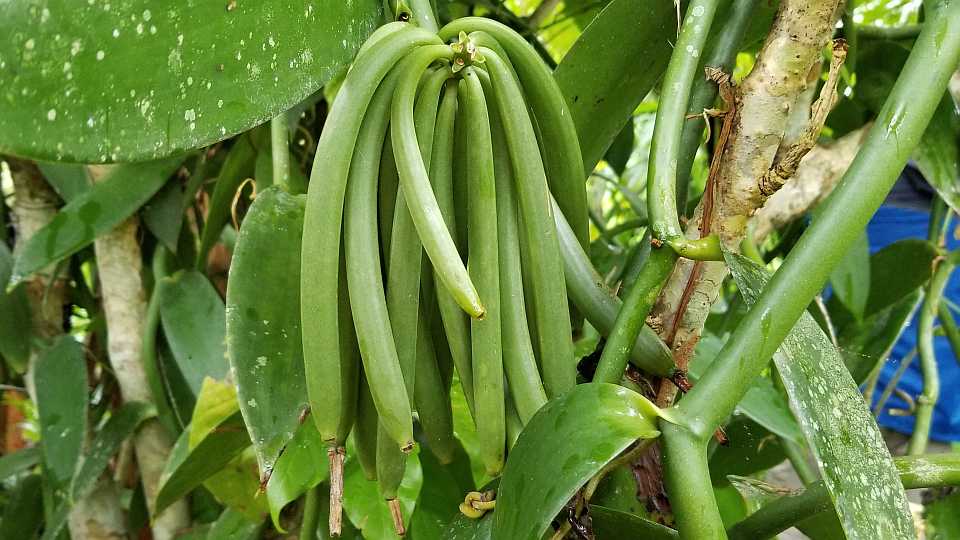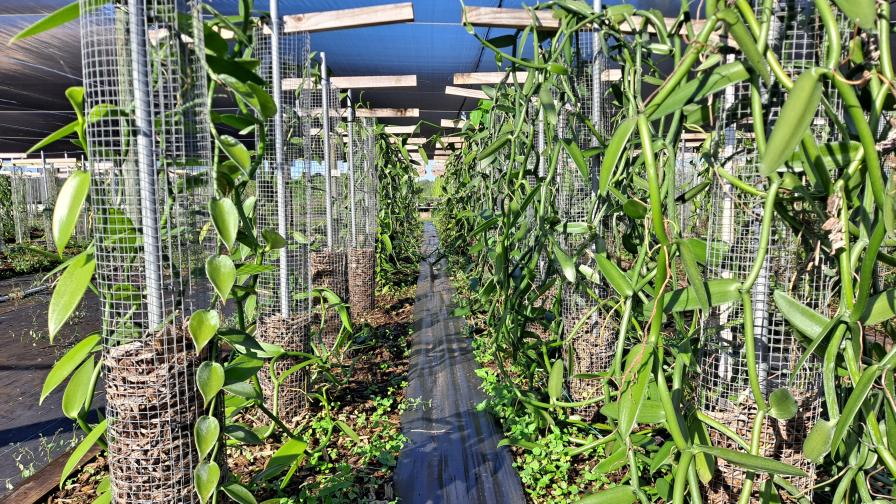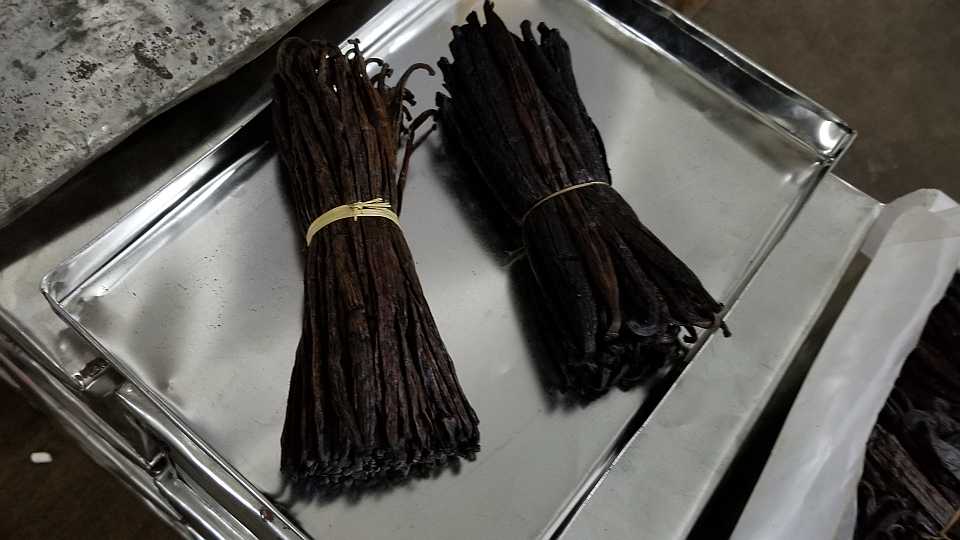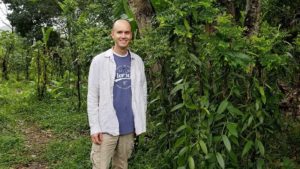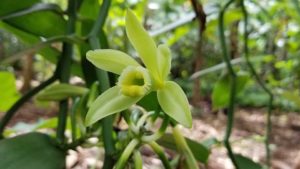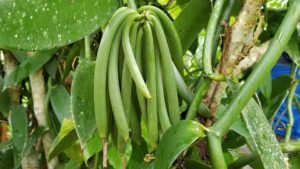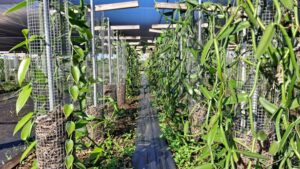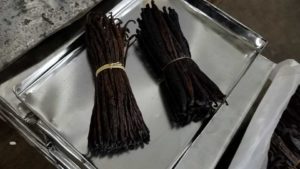Cool Beans! Homegrown Vanilla Venture Now a Big Step Closer to Fruition
Taking an alternative crop mainstream takes much time and effort. With it comes risk and adventure through trial and error. When it comes to vanilla and potential for U.S. production in places like Florida, Hawaii, and Puerto Rico, this crop has legs.
Alan Chambers, an Assistant Professor and plant geneticist at UF/IFAS Tropical Research and Education Center (TREC) has been awarded a $300,000 grant from the USDA’s National Institute of Food and Agriculture to cultivate a domestic vanilla production industry. How sweet it is!
Chambers, who has been leading the effort to bring viable vanilla production closer to home for several years, says a major component of the grant is to advance work with growers, scientists, and residents. In addition, he and his team at UF/IFAS TREC also hope to help solve problems that prevent domestic vanilla cultivation.
“This grant helps us communicate cutting-edge information to growers and helps the information be made widely available,” Chambers adds. “We will also be able to expand the impact of our previous vanilla breeding and genomics research at UF/IFAS.”
Over the last five years, Chambers has generated various vanilla genomics and diversity studies looking at hundreds of vanilla types. He has a collection of more than 300 vanilla types from around the world. He has worked with local and global growers, other scientists and partners in his efforts to identify the best types, traits, variations and yield potentials for Florida.
The major commercial species is V. planifolia, with V. × tahitensis cultivated to a lesser extent. These are cultivated at a hefty price from Madagascar. The island nation leads the world in vanilla production, supplying more than 80% of the world’s vanilla, with Indonesia, Uganda, India, Comoros, Mexico, and other countries significantly contributing to global production. The U.S. is the biggest importer of vanilla beans from Madagascar and, once in America, those beans are further processed into vanilla extract. As a spice, it is the second most expensive (saffron is No. 1) and is the world’s most popular flavor.
“Domestic growers can certainly profit from such a high-value crop like vanilla,” Chambers adds. “We hope that this grant will also help us connect with vanilla researchers in North, Central, and South America so we can leverage biological diversity to improve this species.”
To learn more about the research Chambers is leading, visit tropicalfruitbreeding.com.




